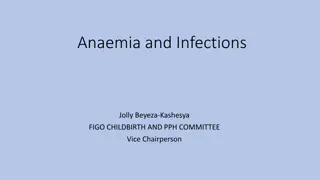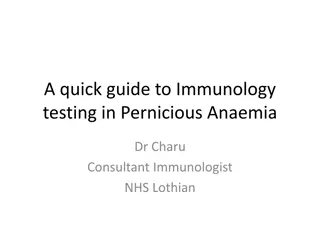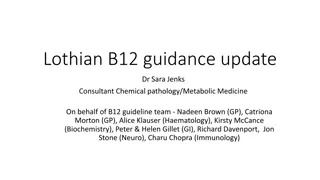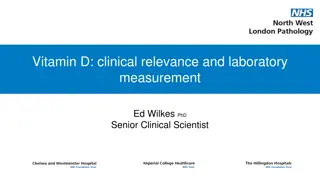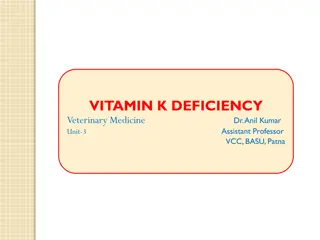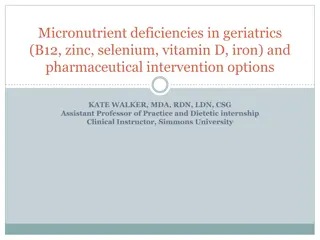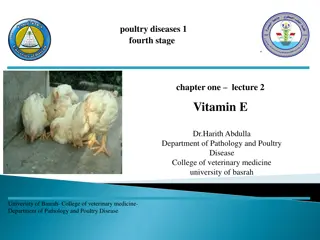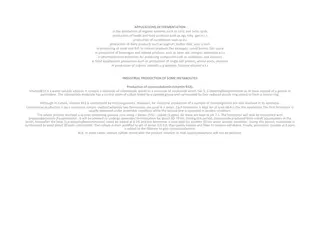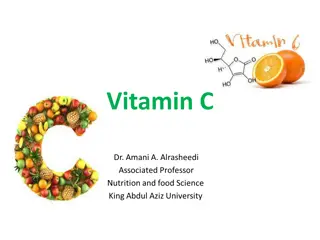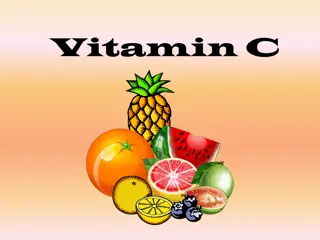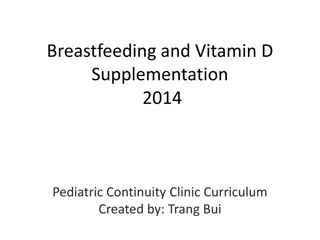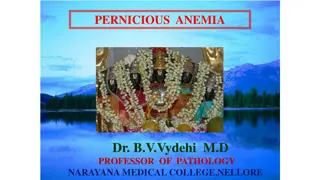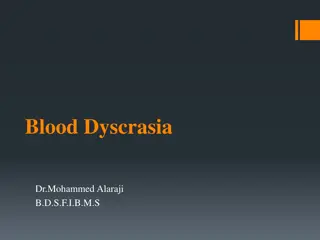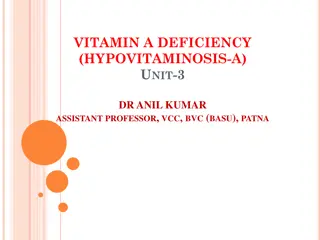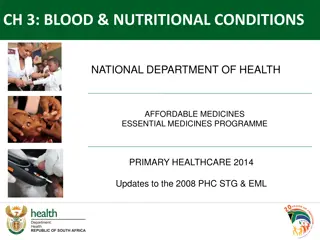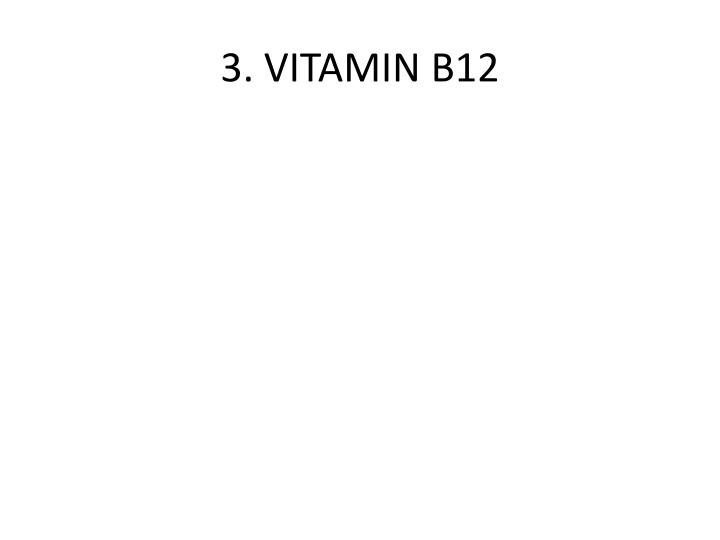
Pernicious Anaemia: Vitamin B12 Deficiency and Symptoms
Pernicious anaemia is a blood disorder caused by a lack of vitamin B12. Patients with this condition do not produce intrinsic factor in the stomach, leading to vitamin B12 absorption issues. Symptoms include shortness of breath, fatigue, loss of appetite, diarrhea, numbness of hands and feet, sore mouth, and bleeding gums. Vitamin B12 deficiency affects cobalamin-dependent enzymes like MCM and glutamate mutase, impacting the body's functions. Treatments involve hydroxycobalamin, methylcobalamin, or cyanocobalamin for pernicious anaemia.
Download Presentation

Please find below an Image/Link to download the presentation.
The content on the website is provided AS IS for your information and personal use only. It may not be sold, licensed, or shared on other websites without obtaining consent from the author. If you encounter any issues during the download, it is possible that the publisher has removed the file from their server.
You are allowed to download the files provided on this website for personal or commercial use, subject to the condition that they are used lawfully. All files are the property of their respective owners.
The content on the website is provided AS IS for your information and personal use only. It may not be sold, licensed, or shared on other websites without obtaining consent from the author.
E N D
Presentation Transcript
The vitamin was isolated from liver after it was found that eating raw liver would alleviate
pernicious anaemia. Pernicious anaemia is a blood disorder caused by lack of vitamin B12. Patients
who have this disorder do not produce a protein (intrinsic factor) in the stomach that allows the
body to absorb vitamin B12. Symptoms include shortness of breath, fatigue, loss of appetite,
diarrhea, numbness of hands and/or feet, sore mouth, and bleeding gums. Vitamin B12 is a coenzyme
and its deficiency leads to the dissfunction of cobalamin-dependent enzymes such as
methylmalonyl-coenzyme A mutase (MCM) and glutamate mutase. Methylmalonyl-coenzyme A
catalyses the isomerisation between methylmalonyl-coenzyme A and succinyl-coenzyme A, while
glutamate mutase catalyses the reversible interconversion of L- glutamate and L-3-methylaspartate.
degradation of several amino acids, odd-chain fatty acids and cholesterol. Hydroxycobalamin, methylcobalamin or cyanocobalamin are now used for treatment of
In Vitamin B12, the Co atom is coordinated to a corrin ring (macrocyle similar to the porphyrin
ring). On one side of the corrin ring, the ligand bonded to Co is a-5,6- dimethylbenzimidazole
nucleotide, which is also joined to the corrin ring. The active form of the vitamin, called coenzyme
B12, contains an adenosyl group as the sixth ligand, while it is called cyanocobalamin with CN-as
the sixth ligand. Vitamin B12 with CN- removed is called cobalamin.
Figure 9: (a) Vitamin B12, (b) The adenosyl group which is present in place of CN-in coenzyme B12.
The coenzyme contains a Co-C s bond and is a cobalt(III) compound. Thermochemical data
indicate that transition-metal-carbon bonds are considerably stronger (100- 200 kJ/mol) than had
been realized earlier, though still somewhat weaker than M-F, M-OR or M-Cl bonds (300-400
kJ/mol). Alkyls are therefore good s donors and are capable of stabilizing high oxidation states
such as Co(III). The instability of metal alkyls thus is of kinetic rather than thermodynamic origin,
and so the species can be stabilized by blocking reaction pathways. Hence, ligands that are strongly
bonded, and occupy all coordination sites stabilize the alkyls.
Co(III) in cobalamin is a d6 system and with ligands such as the corrin nitrogens and the imidazole
nitrogen (a strong ligand field will result), the ion will form strong s and p bonds with the ligands.
The bonding of the alkyl group at the sixth position completes the octahedral coordination sphere.
There are three possible ways in which the Co-C bond can be broken in alkylcobalamines:
Co(III)-R --------------- Co(III) + :R- (carbanion) (1)
Co(III)-R ---------------Co(II) + R (alkyl radical) (2)
Co(III)-R ---------------Co(I) + R+ (carbocation alkyl moiety) (3)
(2) and (3) are one step reductive elimination processes which are reversible under physiological
conditions via oxidative addition of alkyls from alkyl halides.
The cobalt complex of dimethylglyoxine is an effective model for B12. The reactions shown by
adenosyl and alkyl cobaloxime derivatives, which resemble those of B12, include methyl group
transfer, reduction and rearrangements.
Figure 10: Picture of pyridine cobaloxime.

